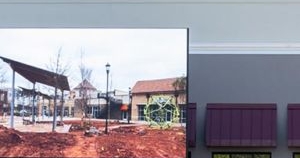With the sunshine of the summer inviting audiences outdoors to enjoy the warmer weather, owners of outdoor video walls have to adapt their displays and their content to better engage these viewers. With the summertime comes brighter sunshine, higher temperatures, and longer days, each of which will impact display performance. Prudent display owners will prepare for these changes. Summertime also changes priorities not just for your audiences but perhaps for your content creators as well. Once again, prudent video wall owners will prepare for this. With Independence Day in the rearview mirror and the first month of summer behind us, let’s take a moment to create a list of things digital display owners should keep in mind when operating their display for the rest of the summer.
Increased Video Wall brightness has consequences
During summer, sunshine is both brighter and longer-lasting, exposing your outdoor display to consistently higher levels of ambient light. As the brightness level of your environment rises, so too must the brightness of your content. Hopefully, your display is already synced to an ambient light sensor that will adjust content brightness as surrounding light levels shift, but if it isn’t, now would be a great time to integrate something like that. How sunlight reflects off an outdoor display is largely dependent on the material used to fill space between diodes. Using a black rubbery material is one of the least reflective options, so in the summertime, it is usually your best bet. Nanolumens uses this type of material in all our products but others may go a different route. Regardless of which manufacturer you used, this is a variable worth checking on because the reflectivity of light off your display impacts the brightness level at which you’ll need to run it. Increased brightness will have an impact on grayscale quality, heat output, and energy usage, among other things. While running a display at a higher level of brightness can actually improve grayscale quality and heat output efficiency, it can increase overall energy usage which itself then raises its own heat output.
Increased air temperatures can impact diode performance
Outdoor or open air displays like those at sports stadiums are of course subject to the temperatures of the surrounding air. In places like Georgia and Florida, where Nanolumens has several outdoor installations, the outdoor temperatures can reach 100 degrees Fahrenheit. Extreme summer temperatures like this can have a negative impact on diode lifespan and performance, which are affected at the device level, not so much at the design or implementation level. That means pretty much every outdoor LED display will encounter lifespan reduction and color alteration issues when exposed to summer heat, so display owners should take measures to prepare for these challenges. While there’s not much a display owner can do about the lifespan of their diodes (beyond buying higher quality, longer lasting diodes, to begin with), display owners may want to adjust their display calibration in anticipation of their colors shifting as temperatures shift. All that being said, these issues are extremely minor, so while worth thinking about, they shouldn’t cause much worry and audiences likely won’t even notice.
You might want to adjust your white point
As your display environment changes, you may also want to adjust the white point of your display. Often tethered to color space, the white point of a display determines its “color temperature” and it is balanced to fit the brightness and color of the surrounding display environment. (Note that color temperature, in this case, is not meant literally.) 6,500 Kelvin (or D65) is the default white point for most video wall environments but summer months may call for a warmer white point.
Longer days mean more on-time
The sun is not only hotter and brighter in the summer but it is out longer as well. While winter days go dark by 5:00 or 6:00 PM in many places, the summers see those days extended by at least a few hours. Audiences will take advantage of the extra sunshine by staying out longer. This is great news for advertisers looking to maximize exposure but it means they need to prepare even more content and increase the amount of time their display is working. Display owners will need to know how many ads space-time they can actually sell and they should know how much longer they’ll want to extend their display’s on-time. This lengthened on-time will probably increase energy usage as well, and thus heat output and energy costs as a result.
Create a Content Backlog and Outsource to Audiences
The summers are often when people take a vacation, content creators included. Smart video wall owners will create a healthy backlog of content to prepare for the short-term absence of the people who create it, whether they be in-house, freelance, or part of a separate outfit. One way to navigate around the reduced influx of fresh content is to invite your audiences to take part in your content creation themselves. Introduce interactive features that audiences can engage with directly, either through touch-screen functionality, through smartphones, or with cameras showing off audience members themselves.

